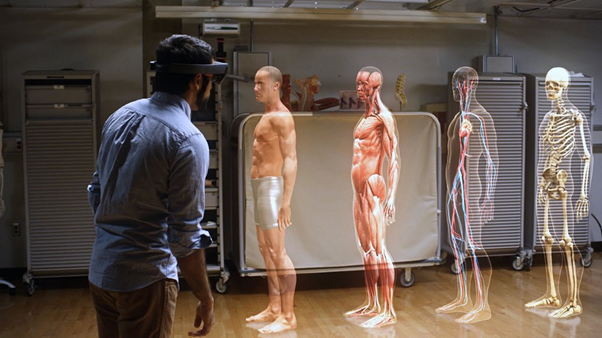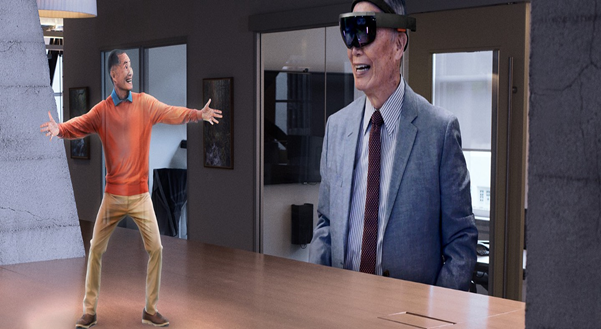Hollywood pioneered the use of Augmented Reality (AR) way before it gained popularity in the Digital front. From Sci-Fi fantasies to Dinosaurs, everything was given a fresh breath of life thanks to the advancements in AR. Over time the gaming industry sniffed an opportunity and their advent into AR, gained tremendous interest across most Tech Industries. Companies clamoured over one another and App developers went into a frenzy designing and developing AR aspects towards delivering a whole new user-experience level.
Mobility is a classic example where AR is trying hard to augment our lives for the better
Undoubtedly Augmented Reality is the next wave in the digital world and it has been gaining momentum over the last two decades. Its emergence has been inspiring and every industry today is busy exploring their advantages in AR. The effect of AR in our lives will only increase and every industry will incorporate it within their environs to touch new heights of success.
AR in Education
The Marketing and Entertainment industries were the forebearer to drive the revolution in bringing AR to our homes. Having said that, the Education Industry will surely follow suit to harvest the plethora of advantages AR has to offer. The global landscape of the Education Industry Sector is braced for the inevitable change that is waiting to happen owing to AR’s surging popularity. According to statistics, AR adoption curve for education is on the rise and expected to touch $8 Billion in market size by 2021.
AR as a technology is constantly disrupting the learning methodologies and has made it more engaging and transformational. Today, 71% of the U.S. population in the age group of 16 – 24 years use smartphones and most (if not all) of them are using them to connect on social media, gaming, shopping and other virtual activities. That is a huge population segment waiting to be converted to a customer base.
The overwhelming growth potential of AR in education is quite evident. Digital and Lively information about any topic makes complex information easier to understand. This in turn decreases your learning curve and improves your productivity.
Let us explore how AR can empower educators and learners.
Showcasing the Impossible: realizing the “Aha” moment
Imagine a live volcano or the surface of the moon or even a frazzled Tyrannosaurus Rex right in front of you, in YOUR CLASSROOM! This incredible experience is possible today with the advent of AR
The greatest aspect of this technology is that you can give today’s students an “aha” moment that earlier was not possible by mere explanations and talking. There are plenty of examples of AR content that fulfil this criterion. Have a look at the AR apps in the following video to understand how learning has been made more interactive.
Expeditions AR - Bringing the world into the classroom
Taking a step back: Why AR?
We’ve established that AR is hot right now and it is being touted for tremendous growth and utilization across industries. However, taking a step back; is it necessary? Is it really helping people, in this case; students? Why can a student not understand and experience the topics through regular technology in their current mobility device? After all, our current mobility devices like smart mobile phones and tablets are highly capable and efficient in scaling models, basic 360° rotations and manipulations.
The answer is Perspective and Interaction.
A situation or topic or object can be viewed in multiple perspectives and having the power to physically view ALL the sides is a great advantage. Humans are interactive creatures and it has always been a proven method of learning, be it toddlers or adults.
Well-designed augmented reality models will empower the learners to view models, similar to their natural settings. Enhanced perspective with closer sensitization results in a better learning curve. This allows students to have an interactive and practical based learning with AR models they can examine the models with more precision and accuracy.
Augmented Reality Education Solar System on CARpet
Boost Engagement Levels
Students have different learning curves. Some learn or understand a topic far quicker than the others and some are more relaxed in their approach to grasp the essence of a topic.
Interactive and Active Engagement is the need of the hour to boost the learning curves and AR has come a long way in achieving that. Augmented reality is rapidly penetrating student’s lives and the convergence of AR with the learning landscape scenarios results in learners engaging with content that is highly relevant to their pedagogy and in line with how they use the digital media content.
For Example: AR developers have made learning chemistry more interactive and fun with a holographic periodic table.
AR is unique, where students can perceive tests and exercises as part of the story and they can learn and understand better. It allows students to learn visually which is immensely interactive and emotionally engaging.
AR developers talk about creating “lively” content in AR and it is possible to bring “learning” to life, empowering students to engage with virtual content which has a great deal of freedom from mere text, images or video content.
Recently, a start-up is developing an advanced learning platform that allows you to visualize the human body holographic & 3D format as shown below.
Stimulate the Senses
Well-planned AR platforms will not be static with just a 3d model, but rather enriched with touch controls and 3D sound effects which has a multi-sensory impact on the learning of a student. Institutes can bring animals into the classroom which are lifelike and make real sounds. Moreover, the narrative and touchscreen controls can easily control the screen information overlays.
Curiscope Virtuali-Tee: Bring Learning to Life with this Augmented Reality T-Shirt
Cost Effectiveness
Physical 3D Models and Shapes, being currently used in many Schools and Institutions come with a heavy price tag. They are bulky and also involve logistics expenses. Moreover they also come with high maintenance criterion.
In this context AR can be a lifesaver! It helps you deploy 3D shapes using the AR platform. We are not promoting the replacement of the legacy physical models but an upgradation with the inclusion of AR models with meagre investment can open new doors for great pedagogies.
Furthermore, in subjects like history, it becomes near impossible to bring real models to class. This is where AR can help in letting your students have strong sensitization to the real world lifelike models and monuments.
Final Verdict
It is not a fallacy that learners who are more motivated and engaged always grasp a subject faster and learn better.Their focus on the learning process is improved as educators grab the attention of their students and keeps them engaged and glued to the learning content using AR.
AR in education possess a huge upside for all learners and educators. Furthermore, students get platforms to visualize complex concepts of various topics and opportunities to gain practical skills by interacting and manipulating content.
If you are an EdTech or an educational institute, then it’s high time you jump on the bandwagon to embrace AR and create transformational content that not only caters to a differentiated learning experience but can radically improve your learner retention and and help you get the most out of your learning and development investments.









